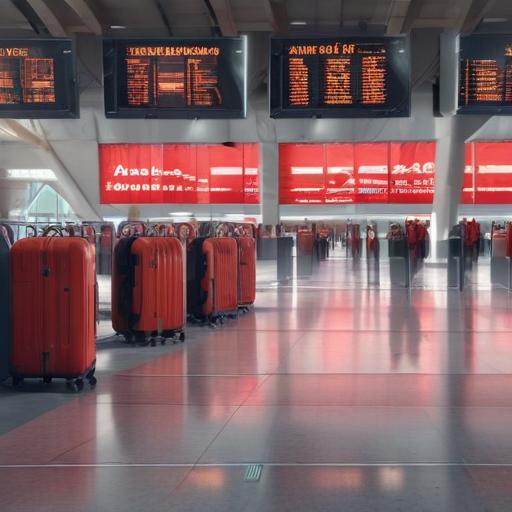Travelers are experiencing significant disruptions ahead of the holiday weekend, as airlines face ongoing cancellations and delays due to severe weather. Recent data from FlightAware shows that over the past few days, more than 1,657 flights were canceled on Saturday, with 846 more cancellations on Sunday and an additional 1,317 on Monday. On Tuesday alone, another 537 flights were scrapped, contributing to a staggering number of delays affecting tens of thousands of passengers.
AAA has projected that a record 72.2 million Americans are expected to travel during the three-day weekend, but turbulent weather conditions are complicating those plans. The National Weather Service has issued warnings for severe thunderstorms anticipated to impact the Plains, Great Lakes, and Northeast regions, likely shifting towards the mid-Atlantic and East Coast.
Several major airports are grappling with the fallout. John F. Kennedy, Newark Liberty, LaGuardia, Philadelphia International, and Ronald Reagan Washington National airports have all reported significant delays due to the inclement weather. Notably, a complete ground stop was implemented at JFK Airport, leading to nearly 100 canceled flights and substantial delays as an overnight thunderstorm approached.
The situation at Newark Liberty was similarly dire, with outgoing flights halted until late in the evening. LaGuardia’s operations experienced major disruptions with over 200 flights canceled. Philadelphia International and Ronald Reagan Washington National also faced significant delays.
In the Southeast, Hartsfield-Jackson International in Atlanta saw over 500 flights canceled after thunderstorms caused heavy rain and flash flooding in Georgia. In the Northeast, Logan International Airport in Massachusetts remained partially closed, alongside other affected airports.
These storms have persisted since the previous week, highlighting the challenges faced during hurricane season, which typically runs from June 1 to November 30. While these disruptions are frustrating for travelers, preparedness and safety measures taken by airports and the FAA reflect a commitment to managing these adverse weather conditions effectively.
As travelers navigate the chaos, there is hope that transporting safety measures and improved forecasting will help minimize future disruptions, enabling a smoother journey for everyone involved.
